Discover 11 hidden attractions, cool sights, and unusual things to do in Pomona (United States). Don't miss out on these must-see attractions: RailGiants Train Museum, Wally Parks NHRA Motorsports Museum, and Palomares Park. Also, be sure to include L.A. County Fair in your itinerary.
Below, you can find the list of the most amazing places you should visit in Pomona (California).
Table of Contents
RailGiants Train Museum
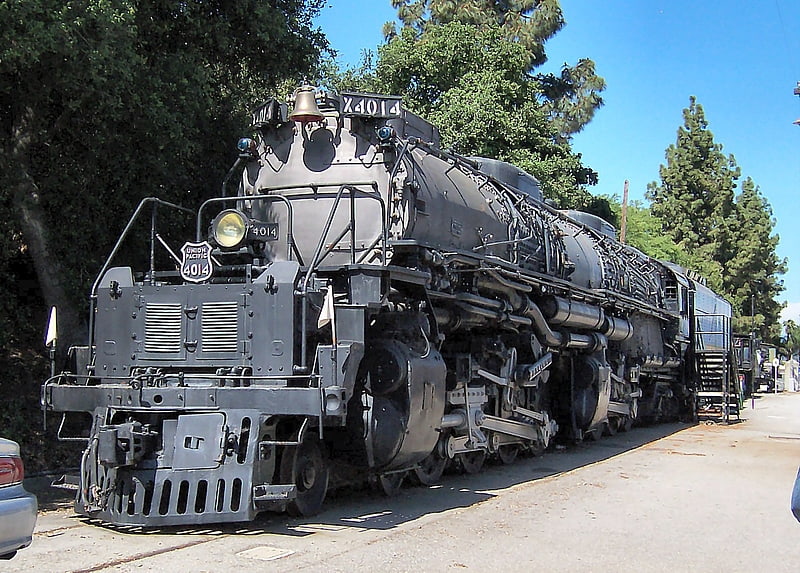
Museum in Pomona, California. RailGiants Train Museum is a railroad museum of historic trains located at the Fairplex in Pomona, California, United States.
The museum was closed indefinitely in March 2020 as a result of the COVID-19 pandemic, but is scheduled to reopen in May 2022.[1]
Wally Parks NHRA Motorsports Museum
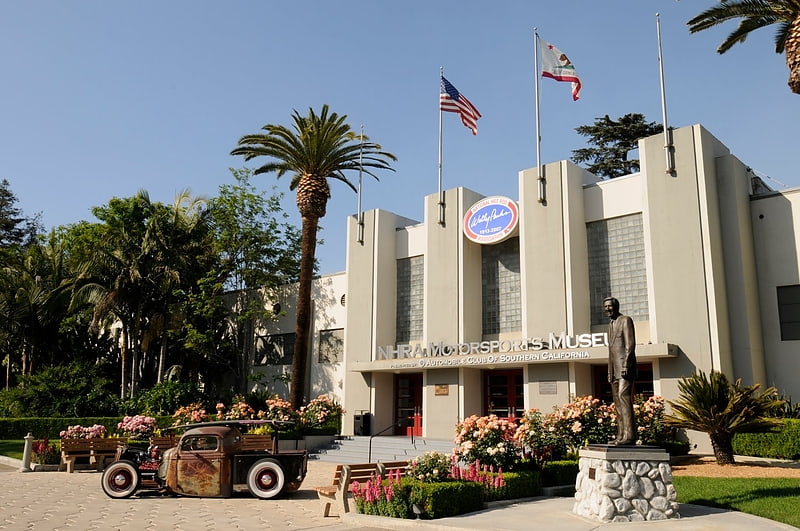
The Wally Parks NHRA Motorsports Museum is located on the edge of the Los Angeles County Fairplex. It houses a collection of memorabilia, automobiles and motorcycles related to the sport of hot rodding.[2]
Palomares Park
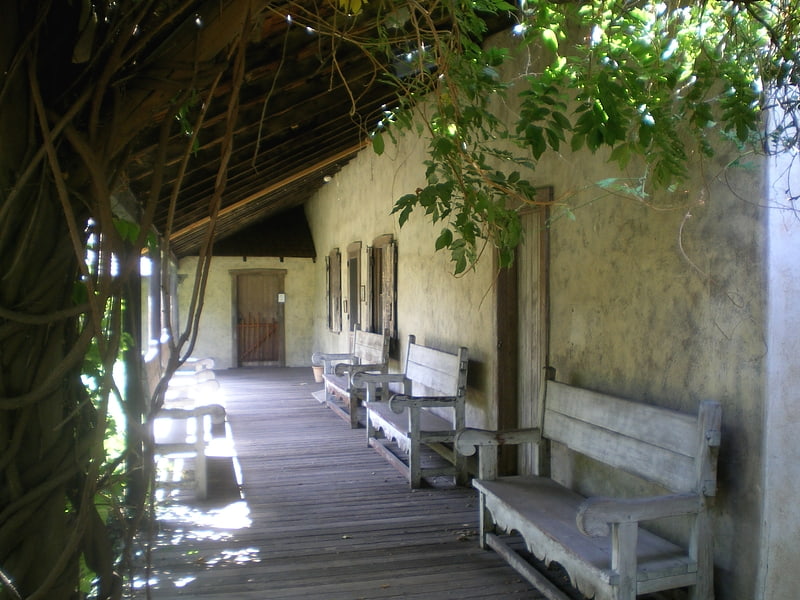
The Ygnacio Palomares Adobe, also known as Adobe de Palomares, is a one-story adobe brick structure in Pomona, California, built between 1850 and 1855 as a residence for Don Ygnacio Palomares. It was abandoned in the 1880s and was left to the elements until it was acquired by the City of Pomona in the 1930s. In 1939, the adobe was restored in a joint project of the City of Pomona, the Historical Society of Pomona Valley and the Works Project Administration. Since 1940, it has been open to the public as a museum on life in the Spanish and Mexican ranchos. It was listed on the National Register of Historic Places in 1971. Of the more than 400 sites in Los Angeles County that have been listed on the National Register, fewer than ten received the distinction prior to the Ygnacio Palomares Adobe.[3]
L.A. County Fair

The Los Angeles County Fair is an annual county fair. It was first held on October 17, 1922, and ran for five days through October 21, 1922, in a former beet field in Pomona, California. Highlights of the Fair's first year were harness racing, chariot races and an airplane wing-walking exhibition. The fair is one of the largest county fairs in the U.S. Fair attendance has topped one million people in every year but three since 1948, and is the 4th largest fair in the United States. Since its opening year, over 89,000,000 visitors have attended the LA County Fair.
Since its inception, the Fair has been the link between California’s agriculture industry and the public, providing a community gathering place where people learn about California’s heritage and enjoy traditional Fair food, activities and entertainment. In recent years the fair has moved away from such agricultural heritage by transitioning from livestock competitions for area growers and ranchers to hired petting zoos. In addition to the 13-acre Ray Cammack Shows carnival, the Fair has an operational farm, an outdoor miniature garden railroad, California’s Heritage Square historical exhibit and America’s Kids-Education Expo. The May Concert Series features 19 nights of first-run musical entertainment and freestyle motocross.
The Fair is operated by the Los Angeles County Fair Association, a not-for-profit 501 corporation. It's held each May, come 2022, on 543 acres of fairgrounds known as Fairplex. This also generates a national economic impact of more than $250 million.
Fairplex also includes the Sheraton Fairplex Hotel & Conference Center, the Sheraton KOA/RV Park, Barretts Sales and Racing, a defunct 0.625 miles horse racing track, the Millard Sheets Art Center, the Child Development Center at Fairplex, the Fairplex railway exhibit, Barretts Equine Ltd. a thoroughbred horse racing auction facility and the Wally Parks NHRA Motorsports Museum.
Fairs in 2020-21 were canceled due to the COVID-19 pandemic in California, deferring, as announced in May 2021, the next fair to May 2022, citing that summer heat resulted in reduced attendance.
Patrollers include security guards, the Pomona Police and Los Angeles County Sheriff's Office.
Anyone who had bought tickets in advance since 2020 can hold on to them in 2022.[4]
Phillips Mansion
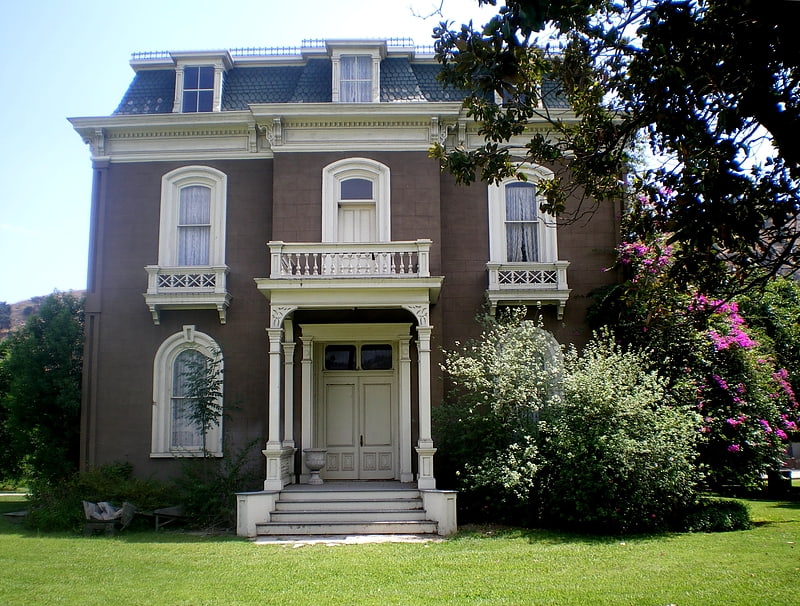
History museum in Pomona, California. The Phillips Mansion is a Second Empire style historic house in Pomona, Los Angeles County, California. It was built in 1875 by Louis Phillips, who by the 1890s had become the wealthiest man in Los Angeles County. Situated along the Butterfield Stage route, the Phillips Mansion became a center of community activity in the Pomona and Spadra area. It was added to the National Register of Historic Places in 1974, making it among the first 25 sites in Los Angeles County to be so designated.[5]
Kellogg Interchange
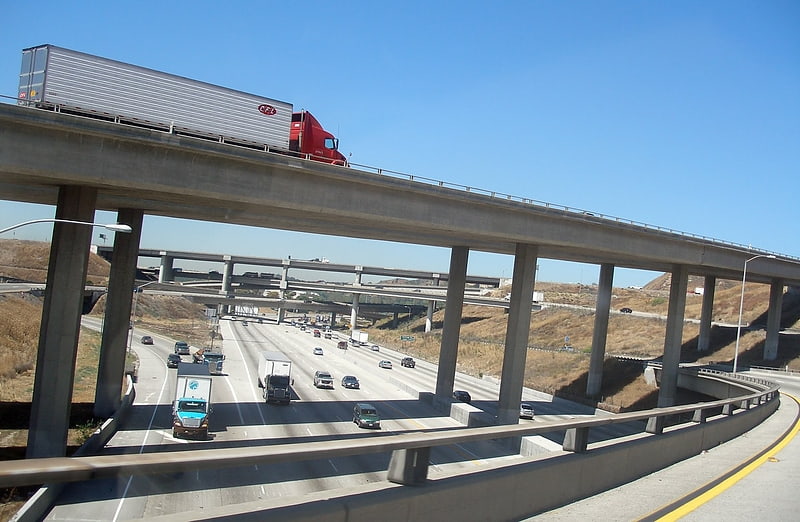
Freeway in Los Angeles County. The Kellogg Interchange complex is a freeway interchange in Southern California, connecting the San Bernardino, Orange, and Chino Hills freeways. The interchange is located at the boundary between the cities of San Dimas and Pomona about 25 miles east of downtown Los Angeles. It is named for the nearby W. K. Kellogg Ranch, now home to Cal Poly Pomona.[6]
CLA Building
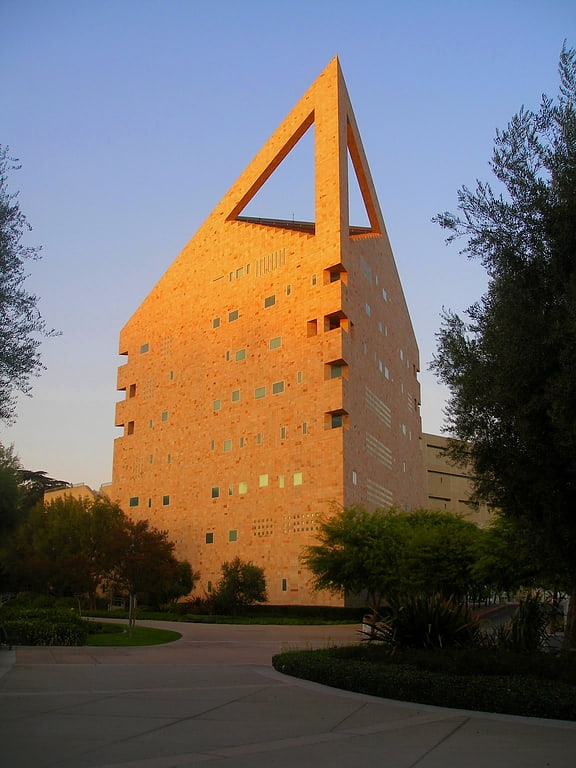
The Classroom, Laboratory & Administration Building, commonly known simply as the CLA Building, is an abandoned building on the campus of California State Polytechnic University, Pomona. Designed by Albuquerque, New Mexico-based architect Antoine Predock in the Futurist style and completed in 1993, it has come to be the defining image of the university. As of 2015, the building was scheduled for demolition, but had yet to be demolished as of March 2021.
Its pointed, triangular and open top makes it the most distinct tower on the university campus. According to Predock, "inevitably, human settlement alters the landscape. Successive habitation has altered the Pomona Valley from the original dry swept earth of Rancho San Jose. Now the verdant Arabian horse ranch of W.K. Kellogg coexists with the technological, superscale freeway interchange." Due to Cal Poly Pomona's proximity to the Los Angeles district of Hollywood, the building has been displayed in films such as Gattaca and Impostor, as well as several TV commercials for products such as cars and cell phones.
The CLA building sits directly above the San Jose Hills fault and has the second-highest seismic "risk score" of 72.94, in the California State University system, after a building at CSU East Bay (Warren Hall). It suffered no structural damage as a result of the July 29, 2008 Chino Hills earthquake, a magnitude 5.4. It has leaked water since it was completed in 1993, and connections and beams at the building do not meet California earthquake safety standards. It needs so much work that university officials began contemplating tearing it down. The CSU Board of Trustees, at its September 21, 2010 meeting, approved a proposal to replace the CLA with a new facility.
All administrative offices located in the "tower" portion of the CLA were moved to the Student Services Building (SSB). The SSB (colloquially known as the "Spaceship" or the "Pringle") opened in Spring 2019 and is located directly southwest from the CLA.
The removal of the building is scheduled to begin in May 2022. The site is planned to be used for green space and outdoor seating and studying areas.[7]
La Casa Primera de Rancho San Jose
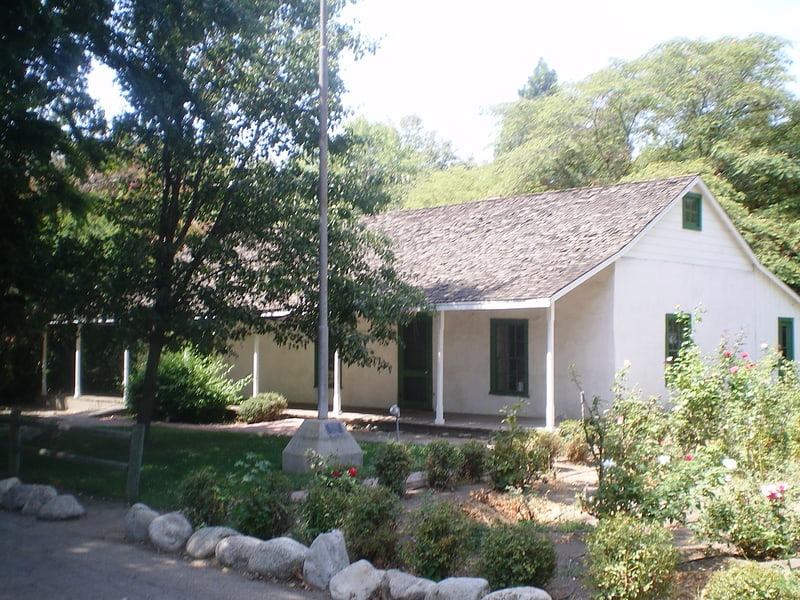
La Casa Primera de Rancho San Jose is a historic adobe structure built in 1837 in Pomona, California. It is the oldest home located in the Pomona Valley and in the old Rancho San Jose land grant. It was declared a historic landmark in 1954 and added to the National Register of Historic Places in April 1975.[8]
Pomona City Stables
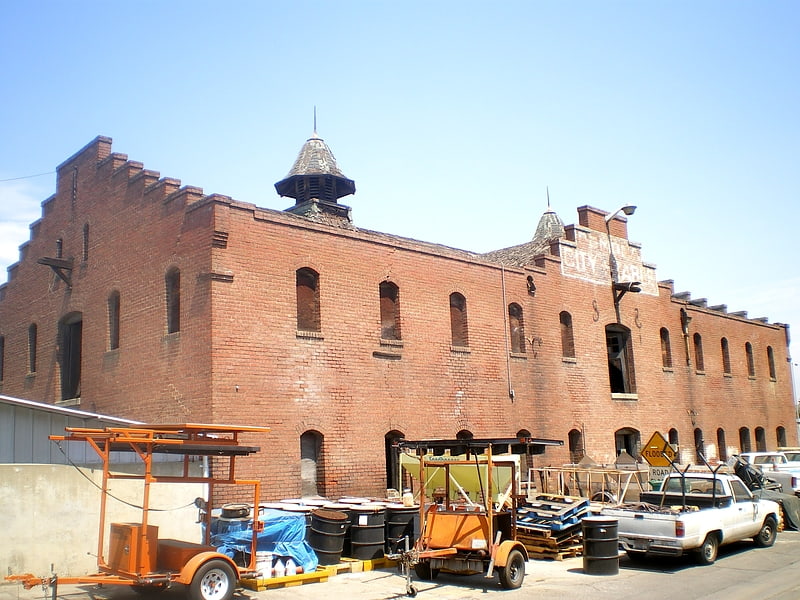
Historical place in Pomona, California. The Pomona City Stables, also known as the Pomona City Yards Brick Building, is a stables building completed in 1909 to house horses owned by the City of Pomona, California.
Built at a cost of $6,000, the Pomona City Stables building was designed by Pomona architect Ferdinand Davis from the firm of Davis and Higgs. Davis also designed several other prominent buildings in Pomona, including the Currier House (1907), the Masonic Lodge, the Ebell Club, and Trinity Methodist Church. Located on White Avenue, just north of the Southern Pacific railroad tracks, the Pomona City Stables opened in April 1909 and were described by the Los Angeles Times as "models of convenience" that would provide "ample room for the city stock and implements for some time to come." Upon its opening, the building was occupied by twenty-two head of horses owned by the city and a caretaker.
The building is reported to be one of the oldest municipal buildings extant in California. In 2003, the Pomona Historic Preservation Commission recommended recognition of the stables building as a historic landmark, and the building was added to the National Register of Historic Places in October 2004. However, the listing of the building has not led to any cessation of the building's deterioration. Located in the middle of a fenced-off yard used by the City of Pomona for storage of municipal vehicles, fuel, and other materials, the building has fallen into a serious state of disrepair and dilapidation. After the July 2008 Chino Hills earthquake, city officials posted a sign (pictured at left) on the entrance to the stables restricting access due to its dilapidated condition. After severe winter rains, the stable walls partially collapsed in 2017. Full demolition is likely.[9]
La Casa Alvarado
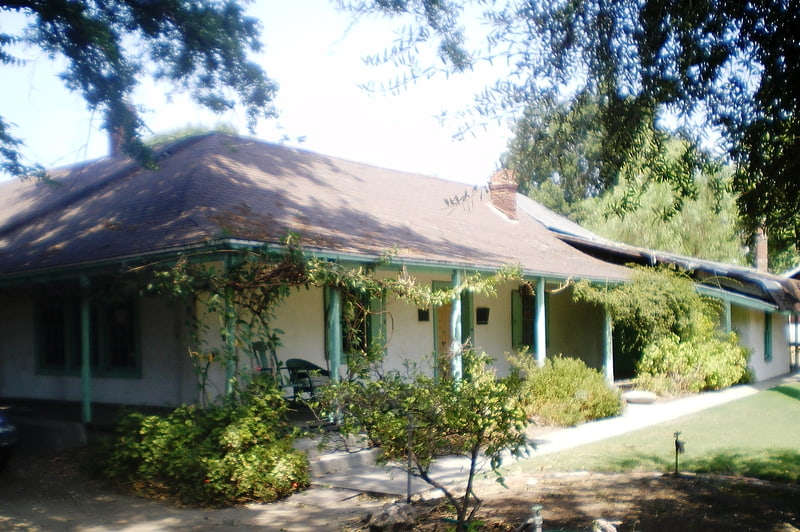
La Casa Alvarado, also known as the Alvarado Adobe, is a historic adobe structure built in 1840 and located on Old Settlers Lane in Pomona, California. It was declared a historic landmark in 1954 and added to the National Register of Historic Places in 1978.[10]
Lincoln Park Historic District
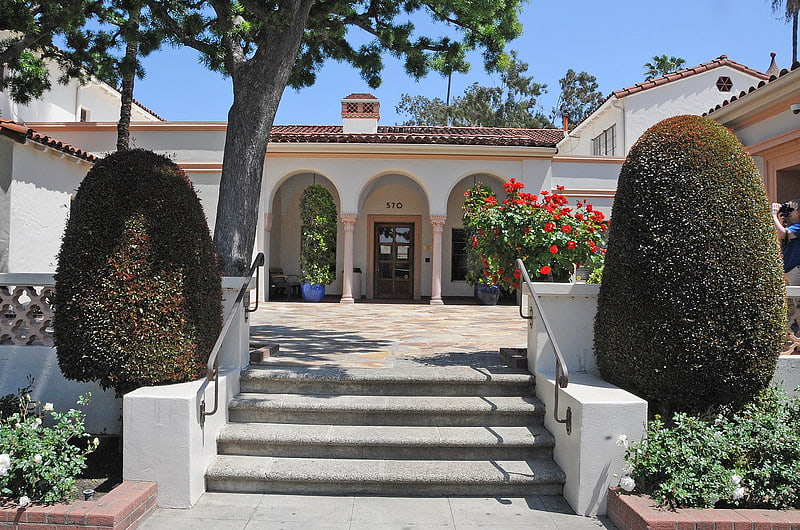
The Lincoln Park Historic District in Pomona, California is a 45-block, 230-acre residential neighborhood. The district consists of 821 structures—primarily single family homes built between the 1890s through the 1940s—featuring a wide variety of architectural styles from late Victorian and National Folk homes, Craftsman and Craftsman-influenced homes, as well as late 19th and 20th Century Revival architectural styles including Colonial, Mission/Spanish, Tudor and Classical Revival.
The Lincoln Park Historic District was entered in the National Register of Historic Places on April 9, 2004. The listing included 745 contributing buildings, four contributing objects (all historic hitching posts), and a contributing site (Lincoln Park). It is one of four historic districts in Pomona, California.[11]